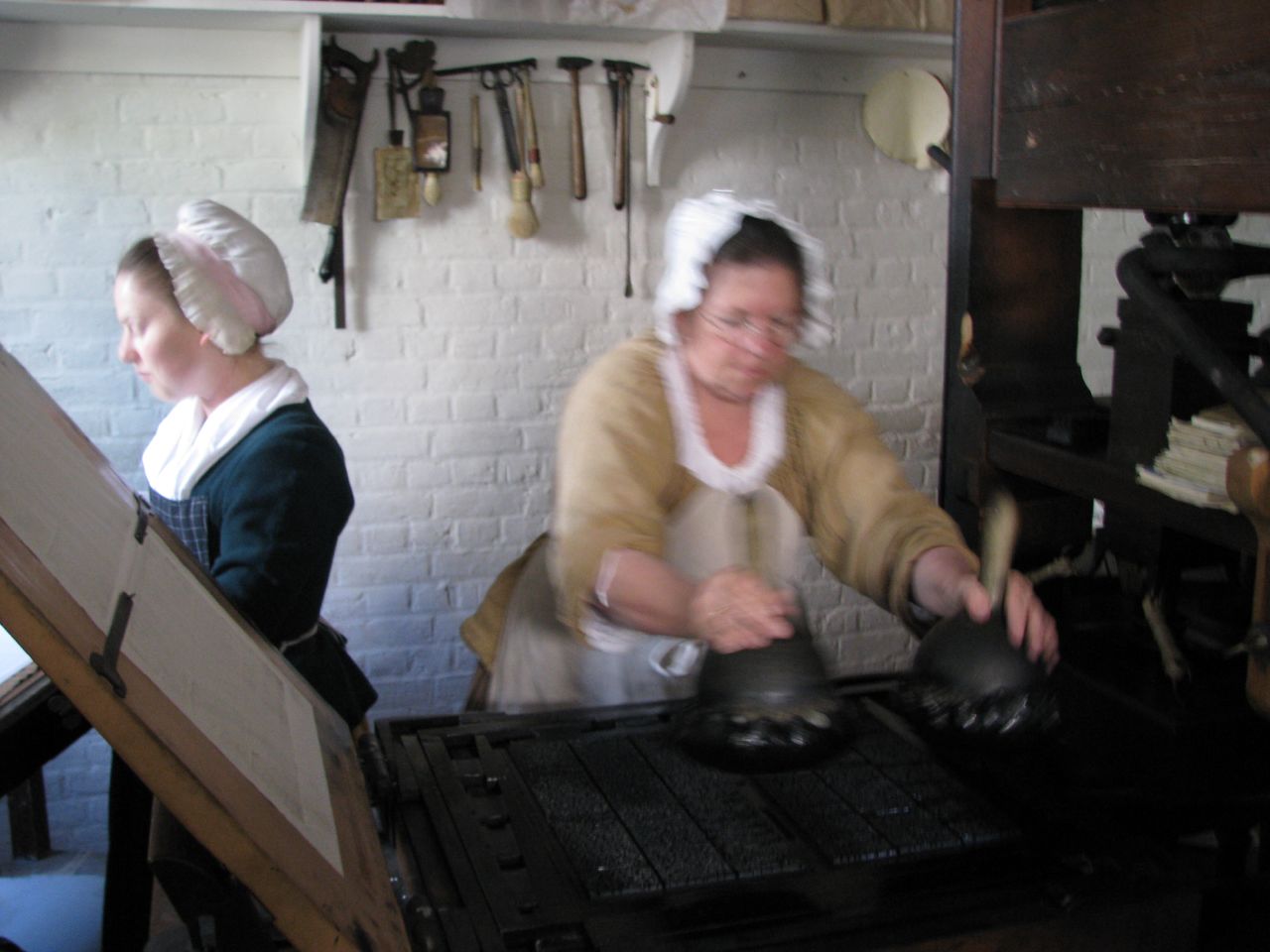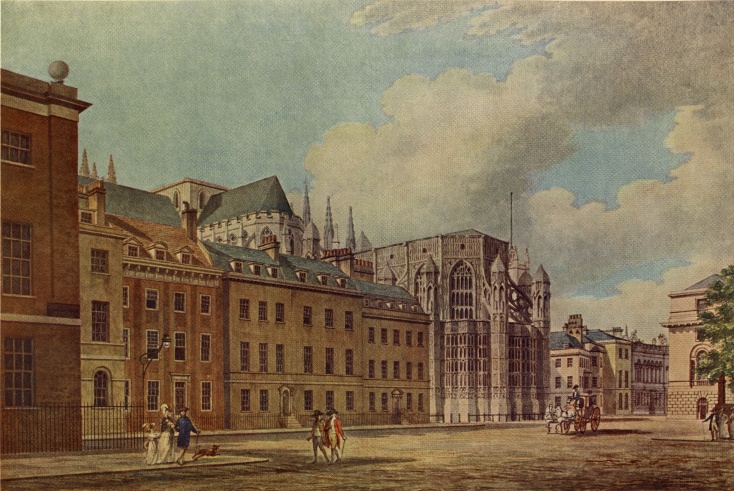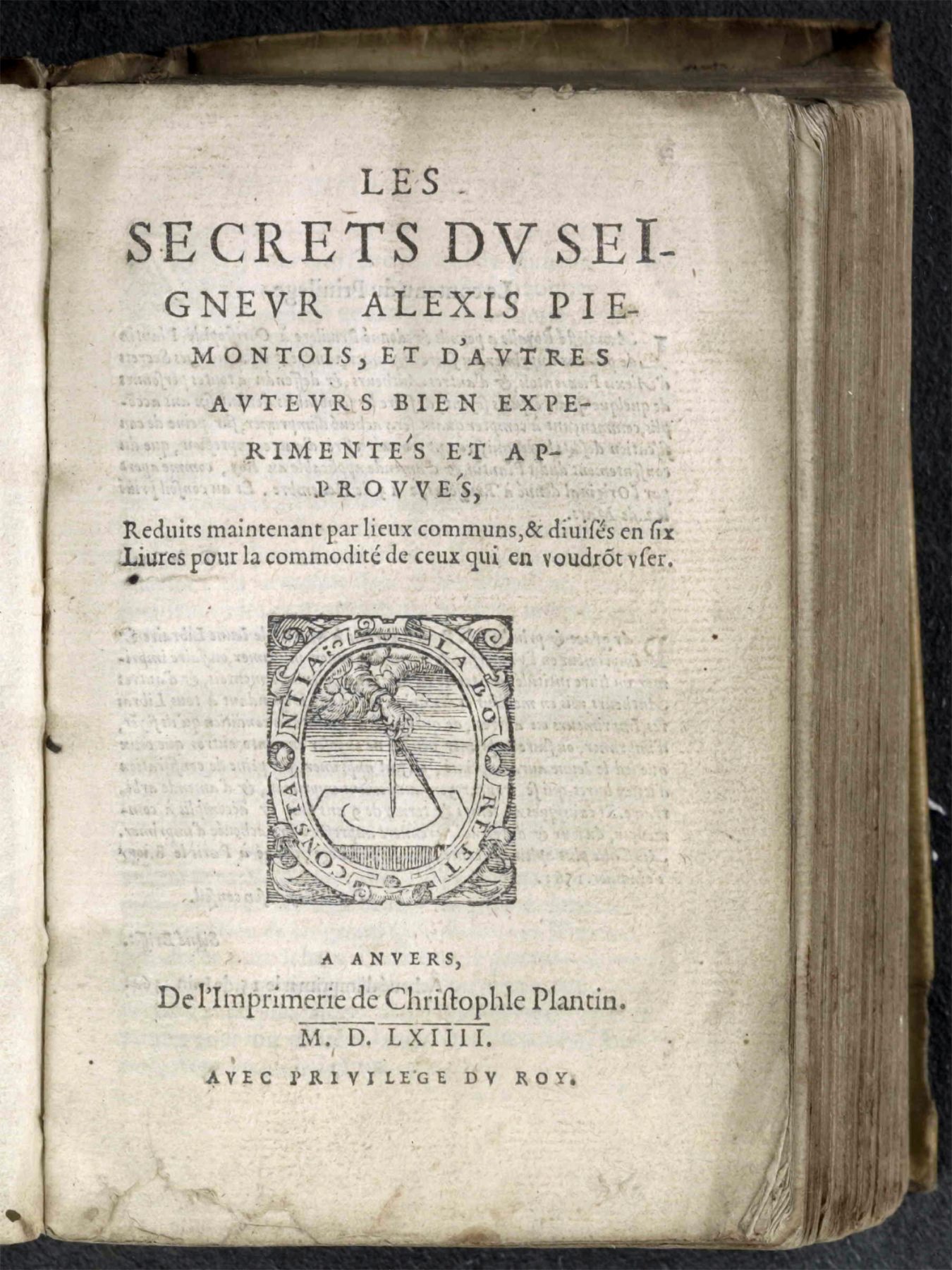|
Anna Maria De Neuf
Anna Maria de Neuf (1654–1714), was a printer and manager of the Plantin Press in Antwerp, a leading publisher in Antwerp, from 1696 to 1714. Life Anna Maria de Neuf was born in Antwerp where she was baptized in the Cathedral on 9 September 1654. She was the daughter of Simon, lord of Hooghelande, and lady Anna Steymans.Jan Baptist van der Straelen, ''Geslagt-lyste der nakomelingen van der vermaerden Christoffel Plantin'', Janssens, 1858, pp. 40-41 Her family was titled and wealthy. She married Balthasar III Moretus in July 1673, with wedding celebrations occurring from the 9th through the 11th of July, provided by his father Balthasar II Moretus and Anna's father, Simon. Balthasar was the head of ''Officina Plantiniana'' (also known as Plantin Press) starting in 1674, when he partnered with his mother in running the firm. Her husband died the following year. Balthasar II died in 1674 after which his mother Anna Goos provided leadership and training to, and worked in par ... [...More Info...] [...Related Items...] OR: [Wikipedia] [Google] [Baidu] |
List Of Women Printers And Publishers Before 1800
The list of women printers and publishers before 1800 include women active as printers or publishers prior to the 19th century. Before the printing press was invented, books were made from pages written by scribes, and it could take up to a year or two for a book to be completed. Books were a luxury mainly for religious scholars and the upper class. Johannes Guttenberg invented the printing press around 1450, which allowed for mass production of books. Having books become more widely available meant that the masses had access to information that they might not get otherwise, but threatened the authority of the state. Some printers had their works censored and may have been jailed for disseminating information of which the state did not approve. Printing required setting type, which could be arduous, and running the press, which was heavy, as well as bookbinding. Although running the press was considered too physically difficult, many women were able to do all the jobs required t ... [...More Info...] [...Related Items...] OR: [Wikipedia] [Google] [Baidu] |
17th-century Businesswomen
The 17th century lasted from January 1, 1601 ( MDCI), to December 31, 1700 ( MDCC). It falls into the early modern period of Europe and in that continent (whose impact on the world was increasing) was characterized by the Baroque cultural movement, the latter part of the Spanish Golden Age, the Dutch Golden Age, the French ''Grand Siècle'' dominated by Louis XIV, the Scientific Revolution, the world's first public company and megacorporation known as the Dutch East India Company, and according to some historians, the General Crisis. From the mid-17th century, European politics were increasingly dominated by the Kingdom of France of Louis XIV, where royal power was solidified domestically in the civil war of the Fronde. The semi-feudal territorial French nobility was weakened and subjugated to the power of an absolute monarchy through the reinvention of the Palace of Versailles from a hunting lodge to a gilded prison, in which a greatly expanded royal court could be more easil ... [...More Info...] [...Related Items...] OR: [Wikipedia] [Google] [Baidu] |
Businesspeople Of The Spanish Netherlands
A businessperson, businessman, or businesswoman is an individual who has Organizational founder, founded, ownership, owns, or Shareholder, holds shares in (including as an angel investor) a private-sector company. A businessperson undertakes activities (commercial or industrial) for the purpose of generating cash flow, sales, and revenue by using a combination of Human capital, human, Financial capital, financial, Intellectual capital, intellectual, and physical capital with a view to fueling economic development and growth. History Prehistoric period: Traders Since a "businessman" can mean anyone in industry or commerce, businesspeople have existed as long as industry and commerce have existed. "Commerce" can simply mean "trade", and trade has existed through all of recorded history. The first businesspeople in human history were traders or merchants. Medieval period: Rise of the merchant class Merchants emerged as a class (social), "class" in medieval Italy (compare, ... [...More Info...] [...Related Items...] OR: [Wikipedia] [Google] [Baidu] |
Book Publishers (people) Of The Spanish Netherlands
A book is a medium for recording information in the form of writing or images, typically composed of many pages (made of papyrus, parchment, vellum, or paper) bound together and protected by a cover. The technical term for this physical arrangement is ''codex'' (plural, ''codices''). In the history of hand-held physical supports for extended written compositions or records, the codex replaces its predecessor, the scroll. A single sheet in a codex is a leaf and each side of a leaf is a page. As an intellectual object, a book is prototypically a composition of such great length that it takes a considerable investment of time to compose and still considered as an investment of time to read. In a restricted sense, a book is a self-sufficient section or part of a longer composition, a usage reflecting that, in antiquity, long works had to be written on several scrolls and each scroll had to be identified by the book it contained. Each part of Aristotle's ''Physics'' is called a bo ... [...More Info...] [...Related Items...] OR: [Wikipedia] [Google] [Baidu] |
Flemish Printers
Flemish (''Vlaams'') is a Low Franconian dialect cluster of the Dutch language. It is sometimes referred to as Flemish Dutch (), Belgian Dutch ( ), or Southern Dutch (). Flemish is native to Flanders, a historical region in northern Belgium; it is spoken by Flemings, the dominant ethnic group of the region. Outside of Flanders, it is also spoken to some extent in French Flanders and the Dutch Zeelandic Flanders. Terminology The term ''Flemish'' itself has become ambiguous. Nowadays, it is used in at least five ways, depending on the context. These include: # An indication of Dutch written and spoken in Flanders including the Dutch standard language as well as the non-standardized dialects, including intermediate forms between vernacular dialects and the standard. Some linguists avoid the term ''Flemish'' in this context and prefer the designation ''Belgian-Dutch'' or ''South-Dutch'' # A synonym for the so-called intermediate language in Flanders region, the # An indicatio ... [...More Info...] [...Related Items...] OR: [Wikipedia] [Google] [Baidu] |
18th-century Printers
The 18th century lasted from January 1, 1701 ( MDCCI) to December 31, 1800 ( MDCCC). During the 18th century, elements of Enlightenment thinking culminated in the American, French, and Haitian Revolutions. During the century, slave trading and human trafficking expanded across the shores of the Atlantic, while declining in Russia, China, and Korea. Revolutions began to challenge the legitimacy of monarchical and aristocratic power structures, including the structures and beliefs that supported slavery. The Industrial Revolution began during mid-century, leading to radical changes in human society and the environment. Western historians have occasionally defined the 18th century otherwise for the purposes of their work. For example, the "short" 18th century may be defined as 1715–1789, denoting the period of time between the death of Louis XIV of France and the start of the French Revolution, with an emphasis on directly interconnected events. To historians who expan ... [...More Info...] [...Related Items...] OR: [Wikipedia] [Google] [Baidu] |
17th-century Printers
The 17th century lasted from January 1, 1601 ( MDCI), to December 31, 1700 ( MDCC). It falls into the early modern period of Europe and in that continent (whose impact on the world was increasing) was characterized by the Baroque cultural movement, the latter part of the Spanish Golden Age, the Dutch Golden Age, the French ''Grand Siècle'' dominated by Louis XIV, the Scientific Revolution, the world's first public company and megacorporation known as the Dutch East India Company, and according to some historians, the General Crisis. From the mid-17th century, European politics were increasingly dominated by the Kingdom of France of Louis XIV, where royal power was solidified domestically in the civil war of the Fronde. The semi-feudal territorial French nobility was weakened and subjugated to the power of an absolute monarchy through the reinvention of the Palace of Versailles from a hunting lodge to a gilded prison, in which a greatly expanded royal court could be more easil ... [...More Info...] [...Related Items...] OR: [Wikipedia] [Google] [Baidu] |
1714 Deaths
Events January–March * January 21 – After being tricked into deserting a battle against India's Mughal Empire by the rebel Sayyid brothers, Prince Azz-ud-din Mirza is blinded on orders of the Emperor Farrukhsiyar as punishment. * February 7 – The Siege of Tönning (a fortress of the Swedish Empire and now located in Germany in the state of Schleswig-Holstein) ends after almost a year, as Danish forces force the surrender of the remaining 1,600 defenders. The fortress is then leveled by the Danes. * February 28 – (February 17 old style) Russia's Tsar Peter the Great issues a decree requiring compulsory education in mathematics for children of government officials and nobility, applying to children between the ages of 10 and 15 years old. * March 2 – (February 19 old style) The Battle of Storkyro is fought between troops of the Swedish Empire and the Russian Empire, near what is now the village of Napue in Finland. The outnumbered Swedish forces, under the ... [...More Info...] [...Related Items...] OR: [Wikipedia] [Google] [Baidu] |
1654 Births
Events January–March * January 6– In India, Jaswant Singh of Marwar (in what is now the state of Rajasthan) is elevated to the title of Maharaja by Emperor Shah Jahan. * January 11– In the Battle of Río Bueno in southern Chile during the Arauco War, the indigenous Huilliche warriors rout Spanish troops from Fort Nacimiento who are attempting to cross the Bueno River. * January 26– Portugal recaptures the South American city of Recife from the Netherlands after a siege of more than two years during the Dutch-Portuguese War, bringing an end to Dutch rule of what is now Brazil. The Dutch West India Company had held the city (which they called Mauritsstad) for more than 23 years. * February 9– Spanish troops led by Don Gabriel de Rojas y Figueroa successfully attack the Fort de Rocher, a pirate-controlled base on the Caribbean island of Tortuga. * February 10– The Battle of Tullich takes place in Aberdeenshire in Scotland during Gle ... [...More Info...] [...Related Items...] OR: [Wikipedia] [Google] [Baidu] |
Joannes Jacobus Moretus
Christophe Plantin ( nl, Christoffel Plantijn; – 1 July 1589) was a French Renaissance humanist and book printer and publisher who resided and worked in Antwerp. Life Plantin was born in France, probably in Saint-Avertin, near the city of Tours, Touraine. He was not born to a wealthy family, and his mother died when Plantin was still quite young. As a youth he apprenticed as a bookbinder in Caen, Normandy, and also married there. In 1545, he and his wife, Joanna Rivière, set up shop in Paris, but after three years they chose to relocate to the booming commercial center of Antwerp, where Plantin became a free citizen and a member of the Guild of St Luke, the guild responsible for painters, sculptors, engravers and printers. The quality of his work as a bookbinder brought him into contact with nobility and wealth. By 1549, he headed one of the most well-respected publishing houses in Europe. He was responsible for printing a wide range of titles, from Cicero to religious ... [...More Info...] [...Related Items...] OR: [Wikipedia] [Google] [Baidu] |
Plantin Press
The Plantin Press at Antwerp was one of the focal centers of the fine printed book in the 16th century. History Christophe Plantin (c. 1520–1589) of Touraine was trained as a bookbinder. He fled from Paris where at least one printer had recently been burned at the stake for heresy, and went to Antwerp. There he bound books, became a citizen, and by 1555 began to print books, at first for distribution by other publishers. The city was already an established center of printing woodcuts, engravings and books. Plantin took on an assistant, Jan Moretus (Moerentorf), who read Latin and Greek and could write correspondence in several modern languages. He became Plantin's business manager, son-in-law and eventually his successor in the Plantin printing press. For over two hundred years the Plantin press had a monopoly, granted by the papacy, for the printing of liturgical formularies, including in Spain. In 1562, suspected of heresy, Plantin fled to France for two years. At an auction ... [...More Info...] [...Related Items...] OR: [Wikipedia] [Google] [Baidu] |






